
STRINGS ATTACHED
Recording Strings
HUGH ROBJOHNS
The art and the challenge of recording is all about capturing the best possible rendition of
the musical performance without colouring the tonal quality of the instruments or swamp-
ing their subtleties in undesirable mechanical noises. In this workshop I shall be looking at
some of the techniques and pitfalls involved in recording violins, cellos and basses, be it as
solo instruments or in the context of quartets and larger string sections.
As regular readers will know, one of my hobby horses is that finding the best position for the
microphone is far easier with an understanding of how the particular instrument works - in
other words, where the sound is produced, how it radiates into the room, and what its fre-
quency spectrum is. With that in mind, let’s start with an overview of the characteristics of
stringed instruments.
The String Family
The string section as we know it today — violins, violas, cellos and basses — emerged around the beginning of the 17th centu-
ry. Before that, stringed and bowed instruments tended to be of the vertically held viol and lyras da braccio form, the latter super-
ficially resembling a modern violin, but typically having five played strings and two or more drone strings. The early and unwieldy
bass violin, also with five strings, was displaced by the grandfather of the modern four-stringed cello at about the same time.
One of the most important characteristics
shared by all instruments in the string family
is the wide range of tonal colours that differ-
ent instruments are capable of producing.
This is principally due to the individual qualities of the wood used in their construction, the details of their internal design and
the skill and technique of the performer.
The basic source of sound is obviously a vibrating string which is encouraged into oscillation by dragging a bow across it. The bow
is traditionally formed from horsehair made slightly ‘sticky’ with rosin. The frequency of oscillation is determined by two things:
first, the tension of the string (set by the tuning pegs or nuts), and second, the length which is free to vibrate. The free length
extends between the bridge (towards the bottom of the instrument) and the position of the fingers on the fingerboard which
‘stop’ the string to a desired length. Unlike guitars, there are no frets on the fingerboards, so correct tuning is determined solely
by the skill of the performer. However, the lack of frets makes it possible to introduce vibrato on sustained notes with a gentle
rocking action of the hand, effectively alter-
ing the length of the string in a cyclic manner.
It is the independent vibrato produced by
each member of a string section, all with ran-
dom frequency and phase relationships,
which contributes so much towards the rich,
full symphonic sound associated with the
best orchestras and string sections — an
effect which is hard to achieve by artificial
means.
The vibrations from the string alone are far
too weak to stimulate enough air to be loud
enough, so an acoustic amplifier is employed.
The body of the instrument is, in effect, a res-
onant box designed and tuned to amplify
the sound from the vibrating strings across
their working range — hence smaller bodies for higher pitched instruments and larger bodies for deeper ones. String vibrations
are passed to the body through the bridge, setting up sympathetic vibrations in the various body panels, as well as in the enclosed
volume of air.
These resonances are inherently fixed in frequency due to the physical size of the panels and cannot translate with the played
pitch, as tends to happen in wind instruments. The tonal character of stringed instruments, therefore, changes from note to note
as different resonances are stimulated. Also, since different body panels, and sections of panels, resonate and therefore radiate
“It is the independent vibrato produced by each member of a string section, all
with random frequency and phase relationships, which contributes so much
towards the rich, full symphonic sound…”

sound in different frequency bands, the direction in which the strongest sounds emerge from the instrument also varies with dif-
ferent notes (see the diagrams of the polar responses of the violin and cello, above).
The nature of the body resonances also has a strong effect upon the harmonic structure of stringed instruments. For example, in
the upper registers of a violin, the fundamental of any particular note is generally the strongest component (the highest note
being around 2.6kHz). However, in the lower registers the fundamental is typically 20 to 25dB lower than its strongest overtones,
which are usually either the octave or the third harmonic. This is primarily because the body is not sufficiently large to resonate
at the true fundamental frequency. The lowest open string vibrates at 196Hz, with a wavelength of around 0.6 metres. The effect
of this weakened fundamental is that the upper strings tend to have a slightly more mellow and fuller sound than the lower ones.
The viola is tuned a fifth lower than a violin and so generates frequencies with a wavelength 1.5 times larger (the lowest funda-
mental note being 130Hz). However, the viola body is typically less than 1.2 times bigger than the violin, so it has even more trou-
ble resonating at the fundamental frequencies of the lower registers. This results in even weaker fundamentals compared with the
overtones, the outcome being its characteristic ‘nasal’ quality of sound. The cello is tuned an octave below the viola, with the bot-
tom, open C string producing a fundamental at 65Hz. Like the violin and viola, the body of the instrument is poor at amplifying
such low fundamentals. The air cavity of the body actually resonates at around 110Hz, amplifying the first overtone extremely
well.
The double bass produces fundamentals as low as 41Hz for a four-stringed instrument and 31Hz for the five-stringed version, but,
as with the cello, the lowest resonance peak in the body (which is the air resonance) is an octave above this. Hence the funda-
mental is a relatively weak component of the sound of the lowest strings, and the majority of the sound energy is contained in
the band between 70 and 250Hz.
In terms of the high-frequency spectrum created by these stringed instruments, the double bass has harmonics which extend to
around 2.5kHz and the cello produces little above about 3kHz. The violin can generate surprisingly strong harmonics up to
around 10kHz or even higher, but the range of overtones produced by all stringed instruments is strongly affected by playing
technique. The length of an open string (that is, one played at its full length) is precisely defined by the nut at the top of the neck
and the bridge at the bottom, and so tends to have a richer harmonic structure than a stopped string. However, if the player
presses the string harder against the fingerboard, the number and strength of upper harmonics can be increased considerably.
The use of the bow also influences the sound quite substantially: if drawn over the string close to the bridge, the resulting vibra-
tions are rich in harmonics, whereas bowing nearer the finger board gives a softer timbre.
Interestingly, the mechanical noise components created by the bowing action are actually a vital element of the sound of the
string family and, relative to the harmonic components, can be as much as 25dB stronger than the mechanical noises associated
with most wind instruments. Usually, these bowing noises are masked by the harmonic sequence of the played notes but, in the
case of the double bass (and, to a lesser extent, the cello) the mechanical noises often extend to higher frequencies than the har-
monic content of the played strings, creating an audible and characteristic buzzing effect.
The starting transient of a bowed string is extremely complex, taking 30mS to 60mS to complete, depending on the string. Cello
and double bass transients often last as long as 100mS on the lowest strings (higher strings start vibrating quicker than the lower
ones). An added complication is that during this transient phase, the pitch of the played note can be up to 20 cents flatter than
the final steady tone, although it is rarely perceived as such. No wonder synthesized strings often sound such a poor imitation of
the real thing!
In terms of dynamic range, a violin can typi-
cally produce sound extending between 45
and 80dB SPL (measured at a rather distant
six metres). Unlike wind instruments, the full expanse of harmonics can be retained across this whole range, as they are more
dependent on finger pressure and the position of the bow than the energy provided by the bowing action. The cello has a sim-
ilar dynamic range to the violin, although the top strings tend not to be quite as strong as the lower ones, and the double bass is
roughly 3dB louder across its whole frequency range. Although the viola can play as quietly as the violin, it can not perform as
loudly, peaking at about 72dB SPL at six metres.
Recording Strings — The Basics
As can be seen from the diagrams of the polar responses of the violin and cello, the large frontal surface of each instrument is the
main radiator of sound across most of the frequency range. However, the width of the projected sound beam varies with fre-
quency, as does its axis, even emerging predominantly behind the player in some parts of the spectrum! The precise radiation
pattern will depend on the nature of the particular instrument, and although the diagrams suggest microphone positions which
have been optimised to capture the most uniform balance of the instrument’s frequency range, these should only be taken as a
guide. There is no substitute for taking the time to move around the instrument in the studio listening carefully for the position
where the optimal balance exists. Indeed, because of their varying polar response, strings afford great scope to alter the balance
“In general, assuming the circumstances permit, it is best to position string players
in a relatively large environment which has fairly reflective surfaces — and the
more wood on the floor and walls the better!”

of the recorded sound with different microphone positions — for example, to capture a more brilliant, detailed sound, or a
smoother, darker tone.
In general, assuming the circumstances permit, it is
best to position string players in a relatively large
environment which has fairly reflective surfaces —
and the more wood on the floor and walls the
better! Like most instruments, the sound generat-
ed by strings ideally needs space to become prop-
erly balanced and coherent, so relatively distant
miking in a large and pleasantly reverberant room
is usually an important factor in a successful
recording.
Every recording engineer has their own view on
the most appropriate mics to use for strings, but
most favour condenser microphones. The high
sensitivity permits a more distant placing than
most dynamic microphones could cope with, and
the wide frequency response, combined with
tonal accuracy, suit the complex sound character
of string sections very well. However, take care to
avoid condenser mics with pronounced presence
peaks as they will tend to over-emphasise the
upper harmonics, particularly on violins, produc-
ing an unpleasantly hard sound quality.
The larger professional studios would typically opt for large-diaphragm mics on string sections, such as the Sony C800G valve
microphone, the Neumann U47 and U87, or the AKG C414ULS. At the project end of the market there are several large-
diaphragm mid-price microphones which would be equally suitable, such as the AKG C4000B, the Rode NT1 and the Audio
Technica AT4033a, for example. There are plenty of other microphone models which could be used, as long as you remember
that, essentially, the aim is to use a smooth-sounding but detailed microphone — and ideally one which has a very controlled
off-axis response so that the room ambience does not become coloured.
Large-diaphragm mics aren’t the only way of recording strings, and many engineers prefer the sound of smaller capsule micro-
phones like the Neumann KM84, and KM100 series, Sennheiser MKH20 and MKH40, AKG C460, and the Schoeps Collette
series. These are all particularly smooth-sounding mics which are capable of capturing a lot of detail too. I have had a great deal
of success with the MKH20 and MKH40 (omni and cardioid respectively), which are really lovely microphones for this kind of
application.
Some engineers still favour ribbon microphones for string sections, as these share many of the desirable qualities of condensers
without the tendency to harshness which some of the latter exhibit. They also almost always have figure-of-eight polar respons-
es, which affords a great deal of control over separation from unwanted spill. However, ribbon mics are notoriously fragile beasts
and tend to be relatively rare these days.
Recording Large String Sections
There is nothing to beat the sound of a full string section. While the London Philharmonic is above the budget of most SOS read-
ers, virtually every town has at least one amateur orchestra, and most can turn out a pretty decent sound given half a chance.
There is invariably a budding orchestrator in their midst who would probably be only too willing to help translate your ideas into
the appropriate notation.
There are three basic approaches to recording an orchestra in ‘living’ stereo, and the concepts do not change significantly whether
you are working with a full complement of musicians, or just a string orchestra. The most difficult solution is ‘multi-miking’ the
orchestra, typically using one mic per two rows of violins and violas and one per pair of cellos and basses — all panned into a fake
stereo image of your own design! Even if you have enough mics to cover the orchestra and enough inputs on the mixing desk,
creating a well-balanced natural orchestral sound from the component parts is no easy feat, although it can be done given the
time.
There are obviously occasions where multi-miking is the best, or only, solution — such as when working in poor acoustics or with
a string section live on stage. The trick is to find a good compromise between the inherently unnatural sound quality derived
from close mics, and the need to minimise spill from the other musicians. Although often overlooked these days, microphones
Signal Processing
String sections normally require relatively little processing. Equalisation may be
required when close miking, but rarely for the more distant techniques.
Compression is also rarely required, although this depends a lot on the nature of
the music, style of the performance, and the rest of the track’s instrumentation.
Usually, if compression is needed it is just to apply a little gentle squashing to the
louder peaks. Something worth avoiding is trying to bring up the level of quieter
passages with a compressor, particularly when a distant miking technique has
been used because the necessary gain make up will tend to emphasise the room
noise and ambience. Far better to have a word with the conductor to see if the
dynamics can be changed by the players themselves.
The most common form of signal processing needed is reverb, especially when a
close-miking technique has been used, and here it really is a case of matching the
reverb to the material. I would tend to favour medium to large room presets, ide-
ally with a dense, smooth and ‘woody’ quality to their programming. The
Wooden Room preset in Yamaha’s REV 500 and 03D is very good for this. Try to
create a suitable and believable virtual room for the instruments to perform in.
Decay times need not be very long - perhaps between 1.5 and 2.5 seconds to suit
the music, although longer times up to four seconds can sometimes be useful if
you want that ‘swimmy strings’ kind of sound! Whatever you do, don’t go over-
board on the reverb level. Most people add far too much reverb in the mix,
resulting in a muddled and imprecise mix. My handy tip here is to bring up the
reverb return fader until the fake acoustic is obvious, then back it off about 5dB.

with figure-of-eight polar patterns can be a godsend in this situation as they allow the mic to ‘look’ down on the wanted instru-
ments from above whilst rejecting unwanted spill coming in from the sides.
Another increasingly popular multi-mic approach is to use bugs. These are usually contact mics temporarily fixed to the bridge
of each and every instrument. Of course, this means lots of cables, dozens of desk channels, loads of panning, and plenty of grief
because they will never, ever all work at the same time! A recent popular alternative uses miniature electret mics on goosenecks
which mount on the bridge, but allow the capsule to be positioned over the soundboard (eg. the Accusound system), or even
inside the body cavity through an f-hole. Some live performers have bugs fitted all the time anyway, but they can also be hired
from most of the major pro-audio hire companies. As you might expect, bugs give superb separation from spill, but tend to
sound pretty horrid in isolation and need a lot of corrective equalisation, not to mention room ambience and reverberation.
If the room acoustics and situation permit, I think most engineers would agree that far better results can be obtained by employ-
ing a technique which leaves the musical balancing up to the performers themselves, with the mics capturing the collective
orchestral sound. The ‘purists’ prefer the classic Blumlein coincident pair, whereas most commercial classical music engineers tend
to favour spaced arrays — both techniques have their own advantages and disadvantages for any given situation.
The coincident technique involves mounting a pair of cardioid or hypercardioid microphones such that their capsules are aligned
vertically above one another, but angled outwards between 45 and 65 degrees from the centre line (this is called the ‘mutual
angle’). Altering the mutual angle, polar pattern and distance of the array from the orchestra provides a great deal of flexibility in
balancing the perspective, image width and ambience of the recording, although precise details are a little too complicated to go
into here. A typical starting point might be with a pair of hypercardioids (my preferred pattern) around three metres above the
floor and perhaps four metres behind the conductor, although this is very dependent on the required image width and per-
spective.
The coincident microphone technique provides excellent mono compatibility (which is to say that the sound doesn’t change
too drastically if the stereo recording is auditioned in mono), and tends to present a lot of precision and detail in the stereo image.
Some hold these qualities in high regard. The inherent drawback of the technique, however, is that directional microphones have
to be used. All pressure-gradient mics suffer to some extent from coloration to off-axis sounds as well as a limited and uneven
bass response. Since the mics are aimed left and right of centre, the middle of the orchestra is inherently off-axis to both mics and
this can present problems in obtaining a natural and consistent quality of sound for all sections of the orchestra.
The alternative approach involves variations on spaced microphone arrays. The stereo imaging created by spaced mics relies on
sound arriving at each microphone at different times which produces imprecise imaging, but a fuller and, to some people’s ears,
a more natural soundscape. The technique also favours omni-directional microphones which generally have a very well-extend-
ed and smooth low-frequency response, together with near freedom from off-axis coloration. One very common technique is
the Decca Tree arrangement, involving three omni-directional mics arranged in a triangle of roughly 1.2 metres on each side and
with the central mic forward of the two outriggers. The mics are then panned fully left, right and centre to match their physical
positions. Depending on the size of the orchestra, it may be necessary to add further outriggers to reinforce the distant edges.
Since omni mics pick up more ambience than their directional relations they have to be sited much closer to the orchestra —
say three metres above the floor and only a couple of metres directly behind the conductor as a typical starting point.
Yet another approach is the ‘dummy head’ idea where omnidirectional mics are placed up to 10cm either side of a vertical baffle
(the whole array usually being positioned as for the Decca Tree).The baffle is typically a wooden or Perspex disc of about 25cm
diameter (representing the human head) covered in felt to reduce the amount of high frequency reflections reaching the mics
(which equate to the ears). Although intended for use with binaural headphones, the technique also creates a lovely amorphous
string sound on loudspeakers which sits nicely behind foreground instruments without offering any distracting imaging detail.
Both of these spaced microphone techniques employ time differences between the channels to relay positional information for
stereo imaging and, if auditioned in mono, can often sound coloured or even phasey. This used to be of serious concern to broad-
casters in particular, but these days mono compatibility is far less of an issue (try and buy a mono CD player!)
Soloists And Quartets
Recording string soloists is relatively simple. Choose a recording environment which has a reasonably lively but warm acoustic,
select a smooth-sounding condenser microphone, find the best-sounding position about two metres above and in front of the
instrument, and record it! Naturally, cellists and bassists tend to stay put relative to the microphone as their instruments are spiked
to the floor, but violinists often twist their bodies back and forth as they play. This shouldn’t be a problem with relatively distant
miking technique, but when close miking, it often produces tonal variations as the high-frequency components of the sound are
directed toward and away from the microphone. The only practical solution is to make sure the musician is aware of the issue…
and hit them with a big stick whenever they start to sway!
If the recording venue sounds nice, it can be worthwhile recording a soloist in stereo, purely for the natural perspective and ambi-
ence. I would personally tend to favour a coincident technique in this situation for its more accurate imaging qualities. However,

if the room sounds horrible, it might be as well to close-mike the instrument and rely on equalisation and artificial reverb — not
ideal, but sometimes the best way of handling a difficult situation. You might even try a commercial bug, or even a DIY bug. I have
had some success using an oversized foam windshield to wedge a miniature electret mic into an f-hole on violins or the fretwork
holes in the bridges of cellos and basses. It is important to take care arranging the cable so that it does not rattle against the instru-
ment body, or could get caught up and pull the mic from its recess. Also, be warned that applying gaffer tape to the instrument
in an effort to secure the mic cable may result in sudden death when the owner discovers that removing the tape also dislodges
the varnish — Blu-tack is often a much safer bet!
A quartet or other small string section can
be approached in a variety of ways, most of
which are a cross between close-miking as
described above, and the orchestral miking
techniques already discussed. Assuming space and room acoustics permit, good results can be obtained by siting a microphone
between 1.5 and 2 metres in front and above the violins. With chamber-sized string sections, try using one mic positioned to the
front and above each group of four violins. In a smaller ensemble where a more intimate sound is required, use one mic for each
pair of violins, positioned a little closer and aimed more or less between them. The exact positioning depends on the width of
the mic’s pickup pattern, and how well balanced its response is to off-axis sounds. Narrower pattern mics obviously need to be
located further away than wide-pattern mics.
A similar approach can be used for the cellos and basses in a large section, but with one mic covering each pair. Alternatively, try
mounting a microphone on a banquet stand raised about 0.5 metres above the floor (roughly at the height of the bridge), and
positioned about 0.6 metres in front of a solo cello. As might be expected, this provides a far more intimate sound.
Published in SOS April 1999
“…be warned that applying gaffer tape to an instrument in an effort to secure a
mic cable may result in sudden death when the owner discovers that removing
the tape also dislodges the varnish — Blu-tack is often a much safer bet!”







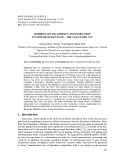
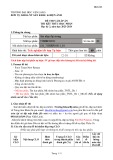
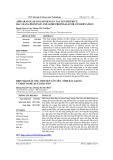
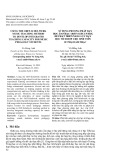
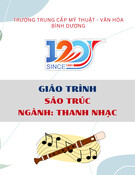











![Câu hỏi ôn tập Kỹ thuật quay phim và chụp ảnh [chuẩn nhất]](https://cdn.tailieu.vn/images/document/thumbnail/2025/20250711/kimphuong1001/135x160/488_cau-hoi-on-tap-ky-thuat-quay-phim-va-chup-anh.jpg)


